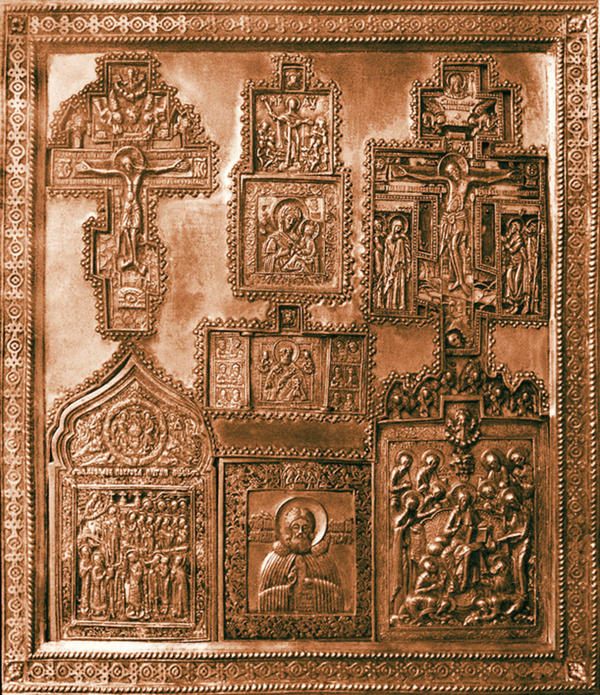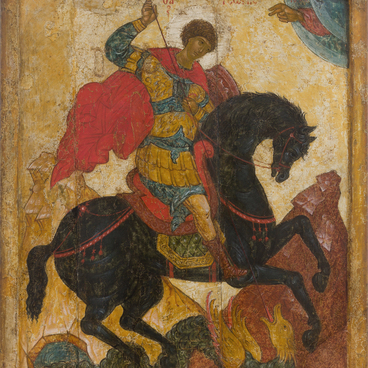Eight Cast Copper Icon Pendants in Frame
Время создания
Late 18th of early 19th century
Размер
40x35,3 cm
40x35.3x3 cm
40x35.3x3 cm
Техника
Cast copper, wood, metal frame, casting
0
Открыть в приложении#1

Unknown author
Eight Cast Copper Icon Pendants in Frame
#3
#2
In Old Russia, copper icons were cast even before the Tatar-Mongol invasion. However, they were more difficult to make than ordinary painted icons, so copper images were not so common. In the 18th century, cast icons were banned altogether. The army and navy needed copper and other metals, therefore in 1722 Peter the Great issued a decree prohibiting both to make such icons and to keep them in homes. The only exceptions were pectoral crosses. The Holy Synod also banned cast images, because ‘they are cast poorly and artlessly’. Icons began to be made secretly in Pomorye and Volga Areas, and in the Moscow Region. In the 18th to 19th centuries, they were made in the forests of the Urals and Siberia.
Copper icons were especially common among Old Believers. For them, fire was a symbol of purification, and casting was cleansed by flame. Besides, such icons were cheaper and more endurable than paintings. Over time, several schools emerged: Guslitskaya, Zagarskaya, Antsiferovskaya, Pogostskaya. The icons made by the Pomorye masters were valued the most, but there were masters of various levels of skill.
#4
The production technology
#5
The production technology of the icons was similar in all regions. First, copper was smelted in the smithy, then sent to the ‘printing house’ which could be located in the smithy as well. There, with the help of special casts and clichés, the faces, plots and crucifixes were cast. The cooled surface was usually treated with a file, but craftsmen of Zagarskaya school did not file their icons. Then, the finished plates were mounted on a wooden base, and if an entire icon was made, then the entire plate was inserted into a wooden frame. Icons were sometimes decorated with enamel and gilding.
#6
The icon
#7
The icon from the collection of the State Art Museum of Khanty-Mansiysk was cast at the turn of the 18th and 19th centuries, presumably in the Moscow region, where craftsmen of Guslitskaya and Antsiferovskaya school worked. Such variants of icons (they are also called plots), were found in the Old Believer communities of the Central Russia.
#8
For many years, this icon had been a family heirloom, until in 1996 the owners donated it to the Gallery of Rarities and Artistic Treasures of the Generation Fund of the Khanty-Mansiysk Autonomous Region. Since 2011, the icon has been kept in the museum.
#9
State Museum of Fine Arts of Khanty-Mansiysk
читать дальшескрыть
00:00
00:00
1x
Eight Cast Copper Icon Pendants in Frame
Время создания
Late 18th of early 19th century
Размер
40x35,3 cm
40x35.3x3 cm
40x35.3x3 cm
Техника
Cast copper, wood, metal frame, casting
0
Открыть в приложении
Поделиться

